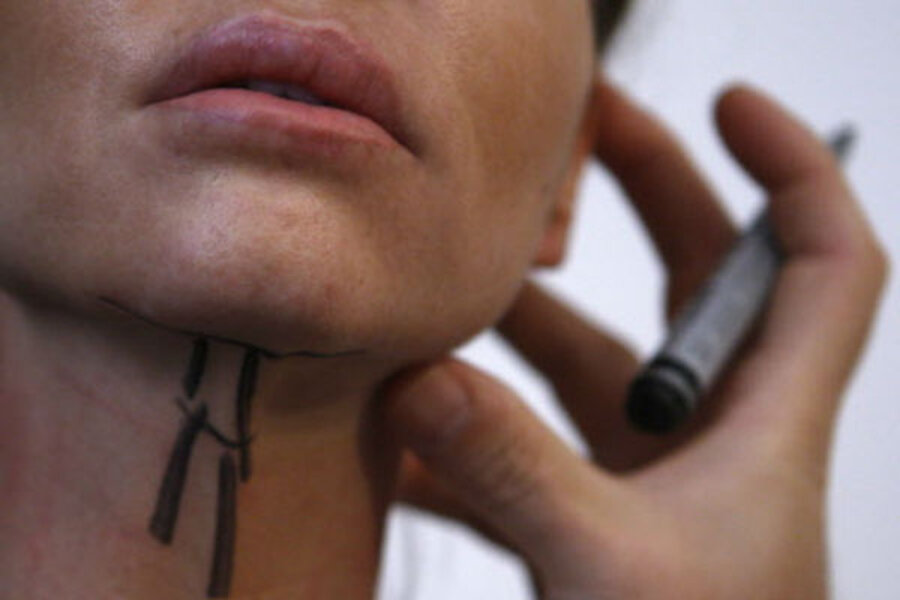Are chinplants the new breast implants? Wanna look like Jennifer Anniston?
Loading...
For those parents struggling to convince their daughters that – social pressures and teen breast implant trends aside – beauty comes from within, here’s another helpful news tidbit from the American Society of Plastic Surgeons:
Chin implants, or “chinplants,” are the fastest growing plastic surgery procedures in the nation, with a 71 percent increase in chin implants in 2011. That’s a quicker growth than that of breast augmentation, Botox, and liposuction combined, the group announced in a press release. There are now some 20,680 chin implant procedures (or “chin augmentation,” as it's known in the plastic surgery world) performed in the US annually.
Great.
Because I’m just psyched that there will be another body part my one-year-old daughter will be able to worry about some day – another aspect of her appearance to stress over, to feel bad about, to compare to some wacky “ideal” that’s really created in Photoshop and surgery rooms.
Sure, for the moment, the biggest increase in chin implant surgery is among women over 40.
“The chin and jawline are among the first areas to show signs of aging,” ASPS President Malcolm Z. Roth said in a statement. “People are considering chin augmentation as a way to restore their youthful look... We also know that as more people see themselves on video chat technology, they may notice that their jawline is not as sharp as they want it to be.”
(Because, you know, when I’m on Skype on weekend mornings, trying to keep the baby from slamming Legos into my keyboard while adoring grandparents gaze from the other side of the screen, I look awesome.)
But if other plastic surgery procedures are any indication, it doesn’t take long for body part fetishization to trickle down to younger people. Already in 2011 there was a 68 percent increase in chin implants over the prior year among patients aged 20 to 29. And according to the Society’s 2011 statistics, the number of teens aged 13 to 19 going through cosmetic procedures is on a slow and steady climb, with cosmetic surgery on teens making up 5 percent of the procedures nationwide.
There are some shocking jumps within these numbers.
The number of Botox treatments on teens rose 20 percent. Yes, Botox. The procedure that is supposed to make older people look ... like a teen. (Or a teen who can’t quite smile fully. Which some parents think is just a teen. But I digress....)
Breast augmentation continued its steady increase, with 4 percent more procedures – or 8,892 – on kids. (Yes, they’re kids. I’m going to lose it. Really.)
But the biggest jump... you guessed it. Chinplants. Teen procedures make up 9 percent of chinplants in the U.S., with 1,809 chin augmentations done on children in 2011. That’s a 69 percent increase.
But remember, people. Beauty is only skin deep.
And if you figure out how to get that message across to your children, for goodness sakes, e-mail me.






